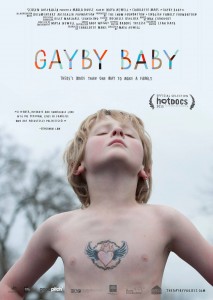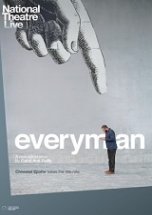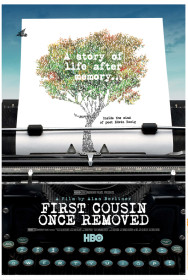A conversation between Nick Alexander, Joanna Di Mattia and Scott Halligan

Synopsis: Three men – a woodcutter, a priest and a commoner – seek shelter from the rain under Kyoto’s Rashomon Gate. The woodcutter recounts a story he can’t quite get his head around. He has just come from a trial for the murder of a samurai in a nearby forest, where four different accounts of the same story have been given – one by the bandit accused of the murder, one by the samurai’s wife, one by the samurai speaking through a medium and the final account by the woodcutter himself. These contradictory testimonies provide the basis for a film that explores the nature of truth.
JO: Okay, so we’re talking about Rashomon, which is one of the great films …
SCOTT: Isn’t that a reggae band?
NICK: Really?
SCOTT: Sorry … Rasho-mon.
JO: (laughing): I forgot what I was going to say … Rashomon for me is a lot more than a samurai film, but I really want to talk about the opening, that opening discussion that the Woodcutter (Takashi Shimura) and the Priest (Minoru Chiaki) have, when he keeps saying, ‘I just don’t understand, I just don’t understand’ which I think is a really interesting opening, not really a question, but a comment, and to just ask what you both understood about this film. If anything?
NICK: Kurosawa’s autobiography (laughs) …
SCOTT: Here we go …
JO: I feel a footnote coming on.
NICK: It’s called Something Like an Autobiography and the point of it is the same that he’s made in Rashomon, it’s that you can’t speak truthfully about yourself without the ego getting in the way … and that is what he is arguing is human nature. And it should be pointed out that these are, it’s an adaptation of books by a different author, so it’s not quite that it’s Kurosawa’s view. It’s a brilliant adaptation of two short stories combined into a film that … for one, it was the first Japanese film seen outside of Japan, and especially after World War II, and the film world was shocked by how well-developed and advanced it was.
JO: Well, it’s highly intellectual, philosophical filmmaking, really isn’t it?
NICK: Definitely. Yeah. And it’s become a word in the English language, ‘Rashomon’.
JO: ‘The Rashomon effect.’
NICK: That you can have a simple tale recounted multiple times, told differently each time … reflecting the personality of the narrator I guess. So I think that the Woodcutter is confounded by what he’s learnt about humanity.
SCOTT: The interesting thing about it is that it’s quite old-fashioned that opening. It reminded me a little bit of the opening of Frankenstein, you know the letters …
NICK: The novel?
SCOTT: Yeah, where the strange tale is almost foretold first, and then he explains, and then they go back and the story is told. But it does seem old-fashioned and then the film starts and you don’t quite know where it’s going until the next time the narrative sort of cycles, the second time, and then the genius of it becomes really clear. And quite modern.
NICK: Each time you’re thoroughly convinced that what you’re seeing next is the truth and then that wipes out the previous stuff. And then at the end, of course, it doesn’t matter which version you believe cause that’s not the point.
JO: It doesn’t matter and you certainly don’t think anybody’s really lying … They’re just telling it how they think it is, from what they’ve experienced.
NICK: In a way, it’s brilliant use of genre conventions as well, when the Toshiro Mifune character talks about riding his horse. You know, there’s that shot that’s like from a John Wayne Western … really heroic music, big wide shot, John Ford style. And then you’ve got the thing from the samurai genre, with their sword battles, and from the [bandit’s] perspective of course it’s heroic, ‘We touched swords 23 times’ … and then when you see the next perspective, you know, they’re both petrified, it’s completely not like that. Little moments like that are so mature and he knows the form and he knows world filmmaking so well at that moment. It’s amazing.

SCOTT: And probably more than any other Kurosawa film I’ve ever seen that narrative technique relies on the performances of the actors, more than any other film. The subtleties, probably Mifune is the most noticeable, the subtle changes that he makes.
NICK: But even the woman, she’s amazing, really the only female character – apart from the medium that the dead samurai talks through –

SCOTT: We have to talk about that later.
NICK: Yeah. But that woman is fantastic, the subtle changes, very amazing. I don’t know how else to describe that.
JO: It’s extraordinary acting. And definitely the more you see the film, the more you notice it. With her especially.
NICK: I think her and Mifune absolutely stand out.
SCOTT: The other guy’s tied up most of the time and mute.
JO: He doesn’t have a lot to do really at the end of the day.
NICK: So this is Mifune’s big break in a way … and [his performance] is so ridiculously animalistic. He’s constantly on the move.
JO: He never seems to be standing up straight in this movie … I always get the feeling that he’s on all fours … crawling around, really close to the ground.
NICK: Yeah. And even when he’s tied up, when you first see him.

SCOTT: Let’s talk about the medium scene. I think that’s the most memorable and disturbing …
JO: I wasn’t expecting it.
NICK: There’s two moments that really jar you. That one, and we’ll talk about the other one later on. But it just shows you how much you can do with simple, technical tricks. Different voice over. And the syncing isn’t even great. The lip-syncing … but it’s a 50-year-old film.
SCOTT: But it somehow fits with the fact that she’s being possessed … yeah, it’s just amazing. Is it sped-up or slowed down? There’s some weird timing thing …
NICK: I think it’s slightly sped-up …
(The trio pause to eat dinner)
NICK: The cinematography, won a lot of kudos … it’s amazing how mobile the camera is and it’s groundbreaking cinematography really.
SCOTT: Who were Kurosawa’s influences? Who was the premier black and white cinematographer for these kind of outdoor shots before Kurosawa, or was he really breaking ground that no one else had.
NICK: I can’t really answer that. I know he credits the cinematographer with that person’s influence … but I know that it pretty much shook up the film world, with showing the possibilities of outdoor shooting. You know, this is early 50s, during the War, during the 40s it’s mainly indoor shooting, you’ve got Italian Neo-Realism straight after World War II, a lot of on-location, outdoor shooting, and I think that actually technically, that’s when cameras became light enough to be mobile. So I guess that’s possibly an influence but and he was definitely influenced because before this film was Drunken Angel and Stray Dog and Stray Dog is definitely influenced by Neo-Realism. But the cinematographer, Kazuo Miyagawa …
JO: Did he work almost exclusively for Kurosawa?
NICK: I don’t believe so. Like he worked a lot with the same screenwriter, musician, etc, but I don’t think so with this cinematographer. I could be wrong.
SCOTT: So a lot of it has to do with the dappled lights of the forest where the sun plays with the trees and the shadows, especially the overhead, the shots pointing at the sun. Do you think, just in broad terms, that there’s something a little not quite right with that forest, just in terms of the … I watched this not long after watching Twin Peaks, but it seems to be that somehow the forest is imbued with this kind of …

NICK: The supernatural …
SCOTT: Yeah, the supernatural of the forest.
JO: You get that a bit in Seven Samurai as well, that scene where the youngest samurai is wandering around, he lies down on the flowers and he meets that young woman … It reminded me, the way that the forest was photographed, it reminded me a lot of that. I think that Kurosawa photographs forests like I’ve never really seen them. There is a level of detail that’s actually quite amazing. Maybe it is like this cordoned off space where other things happen [another realm of reality].
SCOTT: Because it’s isolated … before and after things seem more reliable …
JO: Until they walk in there.
NICK: You mean at the gate?
SCOTT: When they’re retelling the story it’s as if things sort of go back to normal. And then when it starts it’s as if nothing similar ever happened that they were ever familiar with … something out of the ordinary happens in that place.
NICK: Most films are about characters going into a place like that on a journey and I think this one is just more explicit than normal, that the characters do go into a foreign land and they’re tested along the way on this journey and by the end they come out changed, somehow and having learned something. But I think this is more explicit than usual because there’s only two locations … three, cause you’ve got where they’re judged.
SCOTT: Speaking of the aftermath of this whole thing … there’s a lot of despair in this film. It’s not like a neutral, objective truth that the narrative is unreliable, but it’s kind of the despair of the human condition, and at the end, before the very last scene, it’s almost unbearably bleak …
JO: It’s pretty bleak isn’t it?
NICK: Especially that the Priest has lost his faith. The film was criticized for the device of the baby at the end but you definitely need something to lift up at this point … and the Woodcutter redeems himself.
SCOTT: What about the device of the tribunal, the court?
NICK: That you don’t see the judges?
SCOTT: Yeah. That they are [effectively] the audience.
NICK: Yeah. It’s interesting because you think of it like a court or something like that, and maybe it is to like a shogun, royalty or local magistrate or whatever they may be rather than our Western concepts of law and order, that it would have been to one of these feudal authorities. So having seen Hidden Fortress, in context that makes more sense now.
JO: The baby is like a symbol really isn’t it … of the new Japan, of goodness, of hope. And it does sort of appear out of nowhere, because when it appeared I thought have I missed something here, when did this baby just enter this film?

NICK: I like that the film doesn’t judge the guy who steals the baby’s rags, blankets. Like he’s this thief, but he’s so honest about his own nature … So maybe to sum up, what are your lasting impressions of the film?
JO: I just think it’s an innovative, endlessly fascinating and moving film. I want to watch it again soon because I know I’ll discover something new in it.
SCOTT: I hadn’t done any reading on Rashomon before I watched it but I still had the feeling that I was watching something that was really groundbreaking and important … that you were watching a change in what cinema was capable of in terms of telling a story …
NICK: Film being taken seriously as art.
SCOTT: And also keeping up with other art forms, with modernist literature and the other kinds of things that were being tried in the early 20th century.
NICK: It’s got all the hallmarks of great Kurosawa, the humanism and also the developing, amazing visual technique … those lateral tracking shots of the characters running through the forest, which is so good in Seven Samurai … the visual structure during the fights, it’s all directed so well. And Mifune, he steals the show and pretty much does in every Kurosawa film.
JO: Yeah. He’s one of the great actors …
SCOTT: And that’s a wrap! Sorry Jo …
JO: That’s all right, that’s all I have to say.





